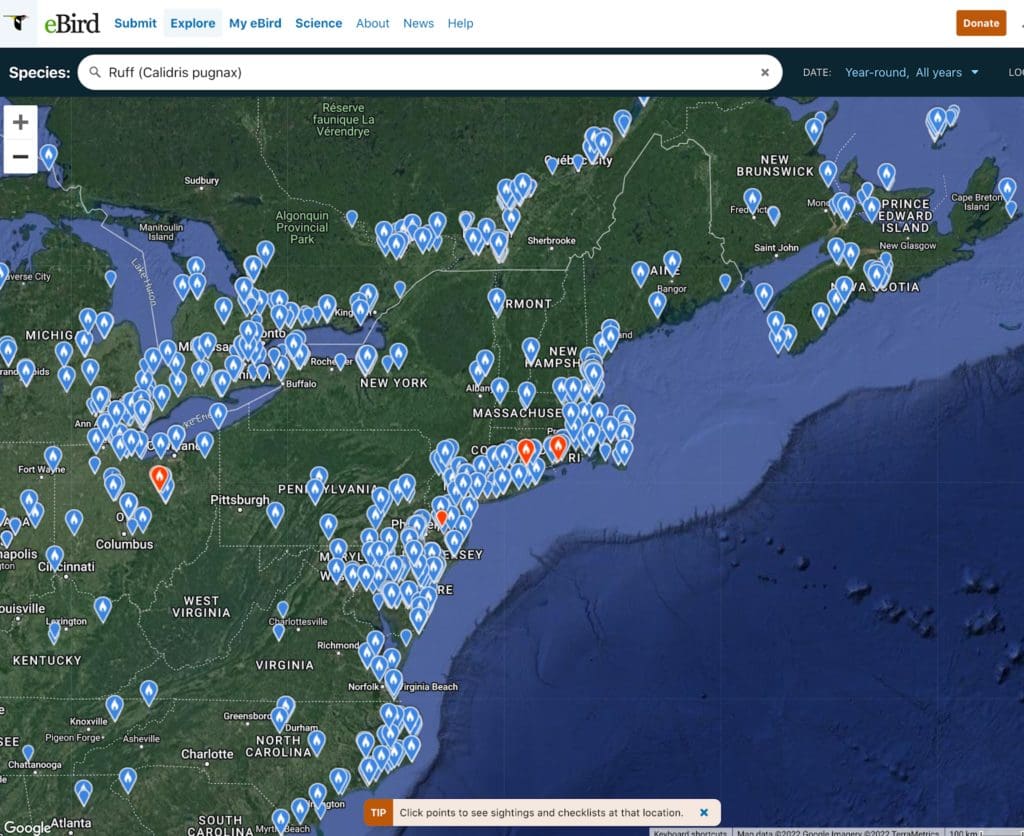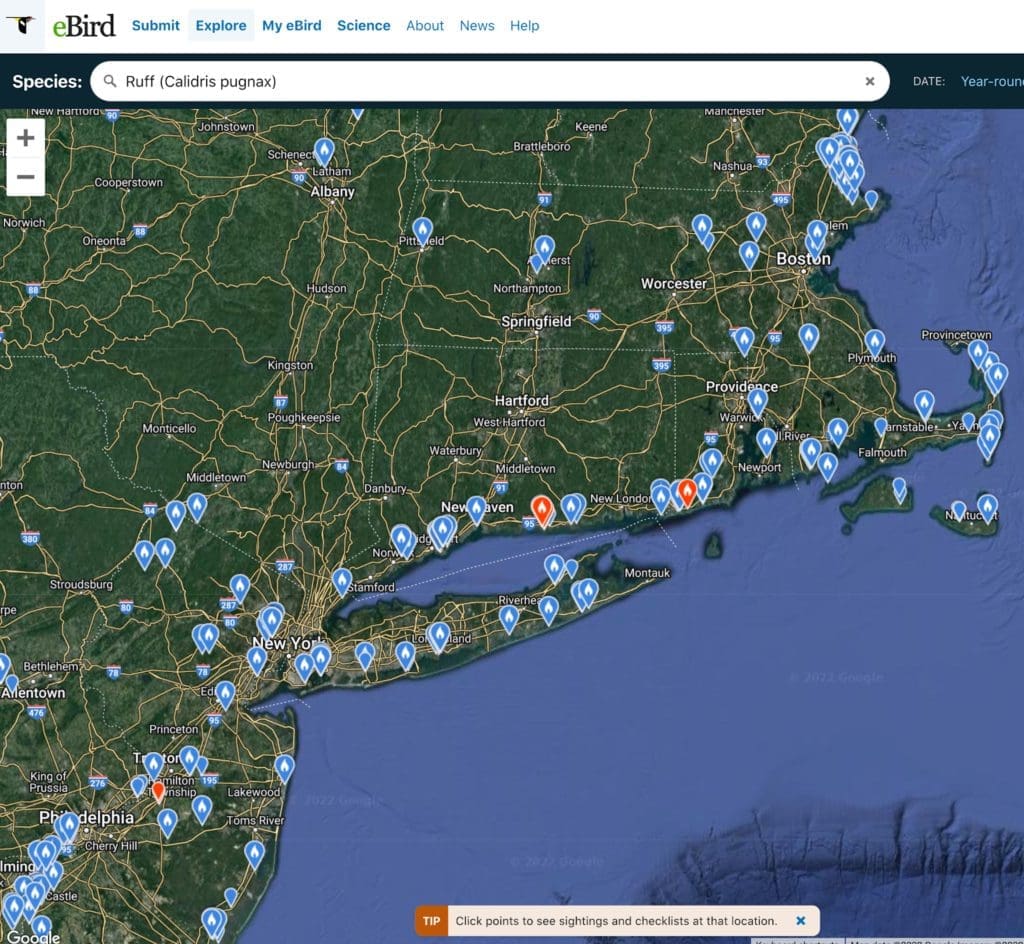Ruff
Calidris pugnax
Photo above: A juvenile Ruff, Hammonassett Beach State Park, September 16, 2022. Photo © Chris S Wood
By the end of the month of September 2022, Connecticut had recorded 324 species on eBird. Seven new species were added during September (see the chart below that is an eBird SYL list sorted by date). Ruff was the 322nd species added, reported to eBird on September 14 by Jim Bair. Jim reported seeing it about noon near Nature Center Parking Lot pool at Hammonassett Beach State Park, while not long after ctbirding listserv moderator Chuck Imbergamo received a report that Karen Gallo and Matthew Male spotted it at the West End pavilion puddles.
EBird describes the Ruff as ” A bizarre and unique shorebird. Medium-sized with fairly short, slightly drooped bill. Leg color varies from dull greenish to bright orange; bill can be entirely dark or mostly orange. Plumage highly variable, especially breeding males, which have fancy neck ruffs that can be black, white, buffy, reddish-brown, or any combination thereof. Females and nonbreeding birds can be confusing, usually plain grayish-brown overall, sometimes with blotchy markings on the neck and belly. “
The Connecticut bird was a juvenile with bright buffy, scaly patterning on the upperparts.
The Ruff is a rare but regular vagrant to North America.
At right is what an adult male Ruff can look like in its breeding plumage. Photo from eBird.

ARCC UPDATE
ARCC records show eleven Ruffs reported in eight different years Connecticut since 1987.
eBIRD MAPS FOR THIS RUFF


Note that there were only three Ruffs in the Northeast in the last 30 days (the red pins), during September. And zooming out further(left), reveals only one additional Ruff in the last 30 days, in Ohio.
REFERENCES
Wikipedia: Ruff:
https://en.wikipedia.org/wiki/Ruff_(bird)
eBird article on Ruff::
https://ebird.org/species/ruff/
Audubon Guide to North American Birds:
https://www.audubon.org/field-guide/bird/ruff
Birds Of The World link, regarding diet of this species:
https://birdsoftheworld.org/bow/species/ruff/cur/introduction
Including this about their diet,
++++++++++++++++++++++++++++++++
“Diet and Foraging:
During breeding season, mainly terrestrial and aquatic insects, including adults and larvae, particularly of beetles and dipteran flies; outside breeding season diet more varied, including caddisflies, water-bugs, mayflies and grasshoppers, small crustaceans, spiders, small molluscs, annelid worms, frogs and small fish; birds wintering in Sahel zone often feed on rice seeds and other cereals , sedges, grasses and aquatic plants. Probes in mud or soil and picks prey from surface or plants; sometimes follows ploughs or wades in shallow water. Nocturnal and diurnal feeder.”
++++++++++++++++++++++++++++++++
Crossley ID Guides online:
CREDITS / CO-AUTHORS:
This report is a product of the COA Seasonality Project, a team consisting of A.Dasinger, C.Ehlinger, R.Gedney, D.Jernigan, C.Repasz, and co-chaired by M.Bull and T.Robben (https://www.ctbirding.org/about/coa-board-of-directors/ ). It is advised by C.Wood and ARCC: specifically by F.Mantlik, F.Gallo, P.Rusch, G.Hanisek (https://www.ctbirding.org/arcc/committee-members/ ).

